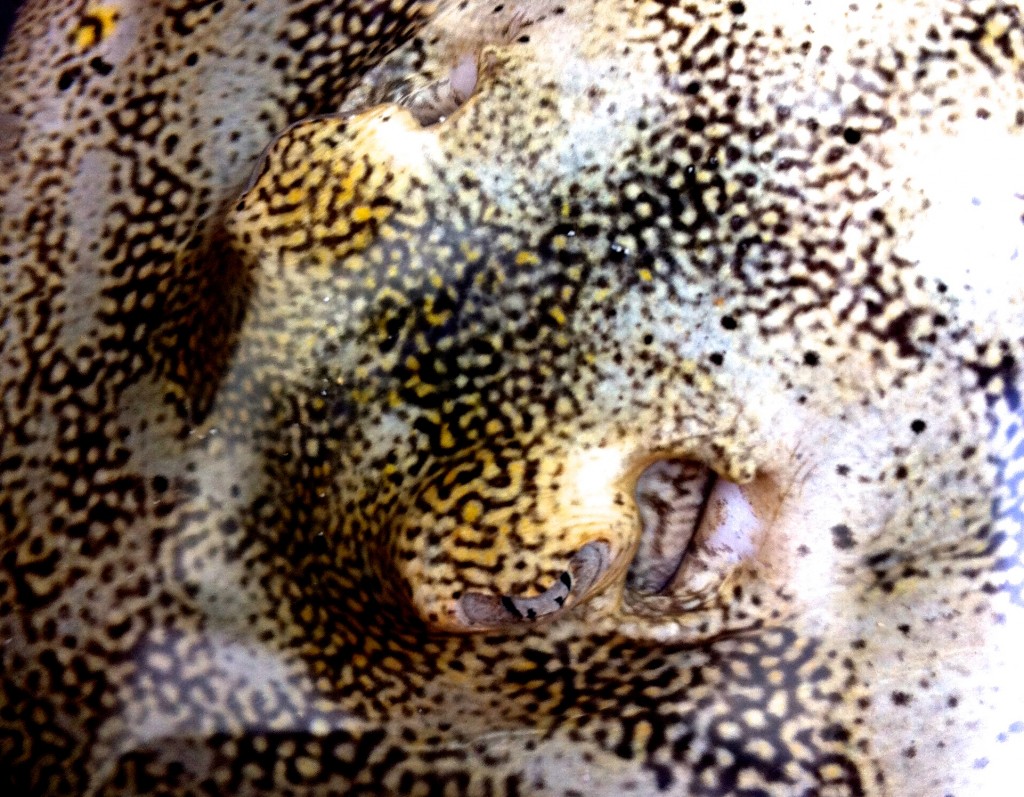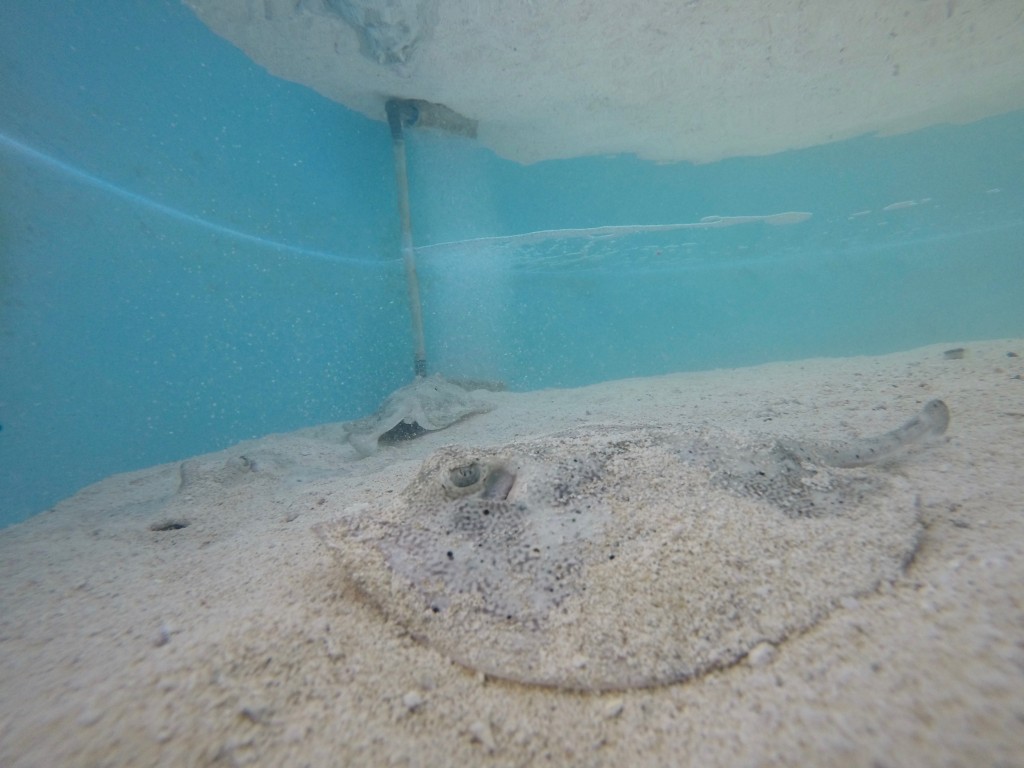In the last month, Research Technician Maggie Winchester began behavioral trials of yellow rays (Urobatis jamaicensis) as part of her independent project, under the supervision of Dr. Barbara Wueringer of James Cook University, Australia, and Dr. Owen O’Shea of the Cape Eleuthera Institute (CEI). This project aims to address the capacity of the electric sense utilized by all elasmobranchs, as it pertains to their foraging strategy. Specifically, Maggie and the team using experimental manipulations to assess to what extent prey type can be ‘discriminated’ by isolating electric sensory mechanisms alone.

The yellow ray is one of the most ubiquitous and commonly encountered elasmobranchs throughout the Caribbean region and is a regular visitor to the shelf and patch reefs adjacent to CEI. It is a small-bodied benthic ray that lives in seemingly mixed sex aggregations and is very easy to catch in shallow water with two dip nets by snorkeler. So far, the team has successfully captured and transported 19 rays to the wet lab at CEI, where they have all undergone behavioral trials, and been successfully returned to their capture sites after 24-hours observation.

During the experimental trials, individual rays are presented with two concealed prey types that are known to be part of their diet based on a study by CEI currently in review for publication. These two prey choices are concealed in agar, masking visual, chemical and gustation cues and allowing for detection solely through electro-sensory means.
This work will allow a clearer and more concise evaluation on the specific role the ampullae-lorenzini have in discriminating a specific type of prey, and raises questions on whether these rays actively choose one prey type over another.